As an Amazon Associate I earn from qualifying purchases.
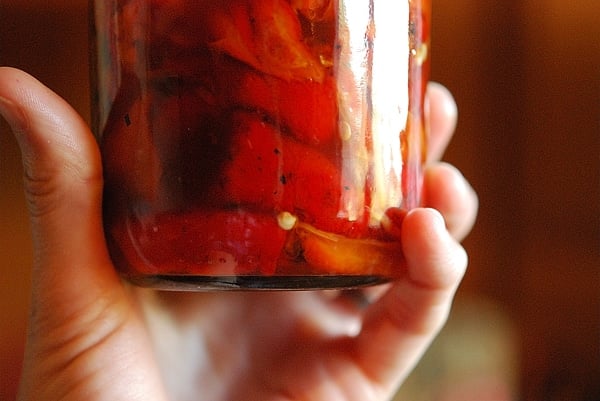
Consider, for a moment, the sweet pepper. No other plant demands so much, gives so little, yet keeps us coming back for more.
Sweet peppers are the coquettes of my garden. I coddle them, dote on their every need, and in return they toss me a few fruits to play with — so few, in fact, that I can barely bring myself to eat them fresh. I preserve almost every one the little minxes give me to eat huddled, alone, in the dead of winter. Or something like that.
Every year I say, “I need to plant more sweet peppers.” Every year I plant a few more. It’s never enough. I could lay waste to everything else in my garden and plant only an array of red bells, piquillos, padrons, pimientos and sweet cherry bombs — and still it would not be enough. It is not possible to have too many sweet peppers. Chiles? Yes, but not sweet peppers.
What’s more, after these princesses deign to drop me a pepper or three, it has become so late in the season that they die soon afterward, our relationship barely consummated. It reminds me of some character in an Edith Wharton novel (And yes, I’ve read several. Blame my mother for that one…)
Disconsolate, I used to count the days until February, when I could start a new set of seeds under hot lights inside; even in birth, sweet peppers need to be the center of attention.

But then, one day, I found a way to cheat death.Yes, it is as simple as a heavy pot, a warm climate, and a quirk of biology.
I live in Northern California, and in my little spot of land, we get a hard frost only once every few years. Light frosts, which are enough to kill a pepper, come no more than a couple dozen times a year in my garden. But in the front of my house, which faces south, those light frosts come less than a dozen times a year, and even in the dead of winter the highs soar past 50°F — warm enough to keep a pepper alive.
But aren’t peppers annuals? No. And that is a dirty secret perpetrated by seed dealers everywhere. The coquettes aren’t eager to die after all, it seems. Only cold kills them. What they want is an even deeper commitment from you the gardener before they willingly give up their fruit. I once had a Thai chile — a Capiscum frutescens, for you pepper freaks out there — that lived five years. Peppers, like most of us, want a long-term relationship.
So I dig up a few of my peppers from the garden every October, pot them up and move them to the front yard, which is such a blast furnace in summer — routinely reaching 110°F — that it would burn most peppers; that’s why I don’t keep them in the front all year long. It works for me. And it would work for anyone who has a sunny window.
Here is a useful video of the process.
My Thai chile lasted in Minnesota until one day even the inner windowsill dropped below 30°F. (Outside it was -19°F, -30°F with the wind.) So it can be done. Once spring returns, you will find your peppers strong and ready to flower early and grow large. And mature peppers bear more fruit.
What to do with that fruit? Well, I’d venture to guess that everyone reading this has a favorite pepper recipe. I have lots on this site. But I also preserve a lot of peppers, less out of fear now than because preserved peppers take on a character totally unlike fresh ones.
My main method to preserve peppers is to roast them over an open fire, then preserve them with a little salt, vinegar and oil. Peppers lack natural acid, so need to be pressure-canned if you aren’t using vinegar or salt.
This way of preserving does a number of things. Roasting kills any enzymes in the peppers that might deteriorate them over time, as well as softening and sweetening the peppers — not to mention getting rid of the indigestible skins. I then dredge the peppers in vinegar to up the acid level and give the peppers more tang. After that I salt them liberally to make things even more stable; salt also adds to the flavor. And finally I cover everything in olive oil to keep air out.
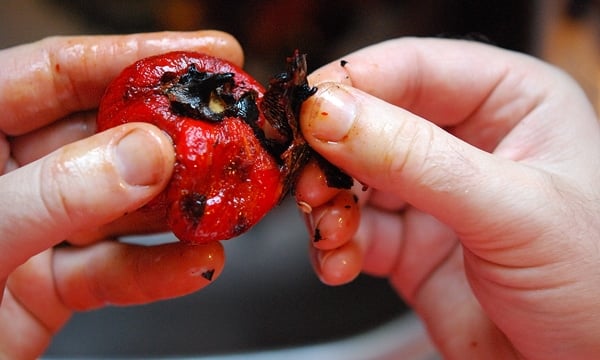
Some tips:
- Grill your peppers hard, as in blackened. Every sort of pepper has a skin of a different thickness. Try to do this with thick skinned peppers if you can; a thin skin can be a bear to peel off unless it is good and charred. Some thick skinned peppers are bells, Hatch-style chiles, pimientos, and paprika chiles. Poblanos are pretty easy to roast, and jalapenos are OK, but their skins are pretty thin.
- Steam the roasted peppers for a long time, in a paper bag. Take your time with this step. Walk away and do something else for a while. You’ll thank me. Nothing quite so fun as to be scalded with nuclear-hot pepper juice when you’re trying to peel them.
- Don’t wash the peppers. You want all that pepper juice you can collect, and running the peppers under water will rob you of that. This is the secret to really, really good roasted peppers.
Those of you in colder climates may be forced to choose which pepper’s charms most attract you, as you may not have space to save every one. And don’t be worried about the pepper dropping leaves in winter; it happens. Just keep it in a sunny spot, protect it from whiteflies, and keep it as warm as you can. It will repay you for your kindnesses next year.
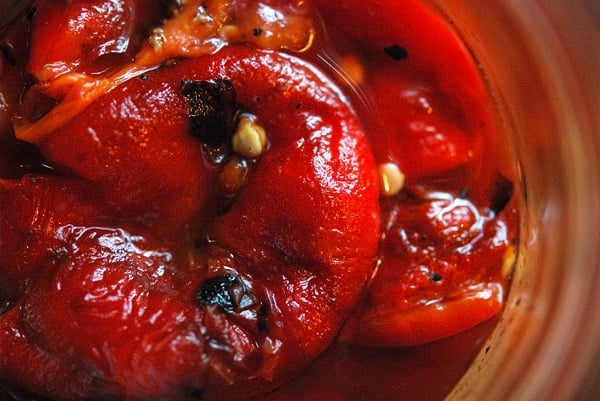
Preserved Peppers
Ingredients
- 8 red bell peppers
- 2 tablespoons olive oil
- 1 cup vinegar (any kind)
- Kosher salt
- Canning jars
- A chopstick or butter knife
Instructions
- Roast your peppers. Ideally this is over a smoky wood fire, on a grill. Second choice is a gas grill, third an open burner on a stove. Alternatively, arrange your peppers on a broiling pan and broil them. No matter what your heating method, you will need to turn your peppers from time to time as the skins char and blacken. When the peppers are mostly blackened, remove them to a paper grocery bag and roll up the bag to seal in the steam. You want to steam the peppers in their own juices. Let the bag sit for 20 to 40 minutes.
- After the peppers have cooled enough to handle, take them out one at a time and remove the skins, stems and seeds. Do not run the peppers under water, as this robs them of flavor. Once each pepper is cleaned — get as many seeds out as you can — drop it in a bowl. Do all the peppers before proceeding.
- Once all the peppers are cleaned and in the bowl, get a shallow bowl or small casserole pan and pour in some vinegar. I use red wine, cider or sherry vinegar for red peppers (sherry when I want them to be Spanish, cider for Portuguese, red wine for Italian or Greek) and white wine for green peppers. Dredge each pepper through the vinegar a few times to get it good and coated. Place it in another bowl. Do this for all the peppers.
- Sprinkle the bowl of peppers with kosher salt. Gently mix the peppers together like a salad. Sprinkle a little more salt and repeat. Sprinkle a little salt into the bowl with the pepper juice — the original bowl.
- Gather canning jars and pour a little vinegar into each one; enough to cover the bottom of the jar. Pack in the peppers, leaving 1 to 2 inches of space at the top. Use a butter knife or chopstick to run down the sides of the jars, releasing air bubbles. You will notice the level of liquid drop. Fill it with the salted pepper juice — but still leave room at the top of the jar.
- Once the air is out to the best of your ability and the vinegar-pepper juice it right at the top of the level of the peppers, pour in olive oil on top of everything to a depth of 1/4 inch. Screw the lids on the jars and you’re done. No sealing needed. These peppers will last a year in the refrigerator, although they will soften over time.
Notes
Nutrition
Nutrition information is automatically calculated, so should only be used as an approximation.
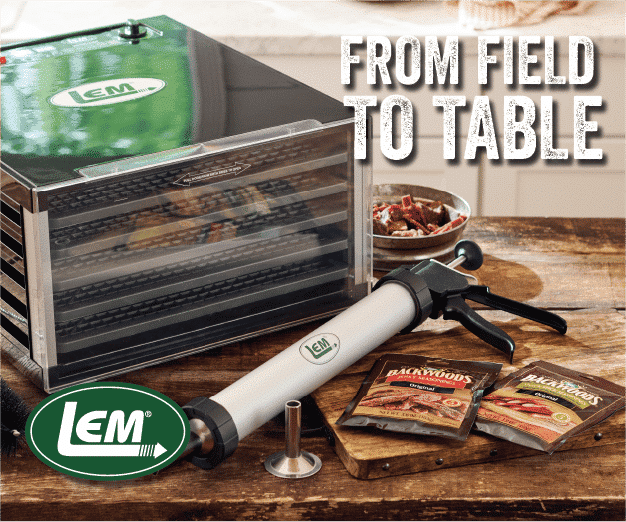

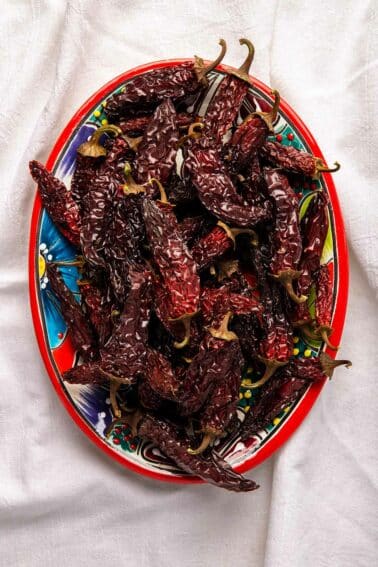
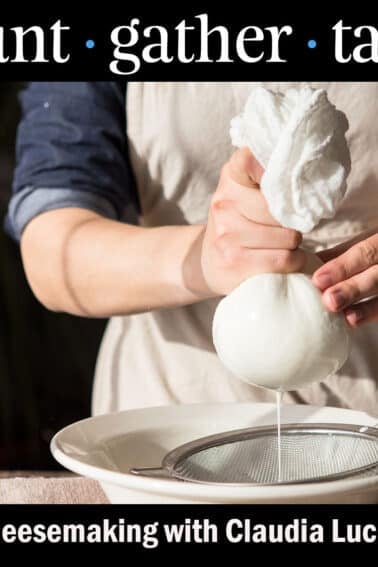


I need a recipe on preserving sweet cherry UNCOOKED peppers in all
I made this with roasted red Hatch chiles, and it’s excellent, but the olive oil on top coagulates and turns solid at refrigerator temperatures. You have to chip through the oil “ice” to fish out the peppers, which breaks the air seal and leaves you with chunks of olive oil stuck to the peppers. I would recommend soybean (vegetable) or Canola or other oil which stays liquid in the refrigerator.
Jutta: Yes, of course, that is what keeps it in the fridge. But that is a good tip for oil that stays liquid in the fridge, thanks.
I have made this recipe twice now and highly recommend you try it. The peppers are delicious and not too vinegary. Don’t worry about shelf life, they last a good while, but are so tasty they won’t hang around long!
Peppers are now $1.50 a pound ! I put leftover vinegar/olive oil juice to a bottle that I keep in the fridge.I use it on tomato and black olive salads when the peppers are all gone.
I found cutting the peppers in half and removing the seeds before roasting allows me to control how soft the peppers are when I skin them and not worry about the seeds..
I like to put quarters of a pepper in jars as they are easier to handle.
Would a balsamic vinegar or wine vinegar have a high enough acidity level for this? Or would there be some other factor that would make the preserve unsafe?
Tara: No. This is an old Italian method that works, but is not USDA approved. This method works well, but I always keep these peppers in the fridge. If you want shelf stable peppers, you will need to pressure can them.
I like to roast my red peppers in the oven until they’re blackened and enjoy eating the skin … do I have to peel them before going through the rest of your process to preserve them?
Grace: If you like eating blackened pepper skin, go for it. It’s not harmful.
Hank, do you recommend this method for preserving hot peppers such as ghost or scorpion peppers? I also have hundreds of Aji Charapita peppers this year. Any thoughts on how to preserve them?
Brad: with Aji charapitas, I like putting them in a jar, covering with vinegar and using that. I don’t work with ghost or scorpions, but habaneros are good pickled or pureed into sauce. A lot of people dry them, too.
I’m going outside in a few minutes to start the fire for my peppers. My now annual , much anticipated ritual. This method is perfect and the peppers are luscious all year. Thank you for the instructions.
Adjar
Such a great, easy way to take care of extras! And rather similar to Hank’s smoked, preserved jalapeno recipe (which everyone should have already made and have a jar or two in the pantry).
These sound incredibly delicious – I can’t wait to try them. I was wondering why wait till after charring and steaming to remove the stem and seeds.
Sorry I did read the previous posts but wondered if pressure canning was recommended. Would it result in a jar of mush?
Michele: Kinda, yeah. It does work for preservation, but the peppers do soften a lot. My advice is to simply roast your peppers, salt them a little, and then pressure can. They’ll still be soft, but won’t (or at least shouldn’t) disintegrate.
A….. with the vinegar does it taste, well… vinegary when used in sauces etc?
B. Is there any reason one can’t fill and pack a larger jar and sample from it through the year like I do my ferments?
C. Can this be frozen vs refrigerated or will that degrade the texture? Thanks!
My fridge gets pretty full with eggs and ferments so trying to figure out the most space conserving method. I grew a BUNCH of roasting red peppers this year with plans to can them after roasting but after talking to the extension hotline I’m thinking an alternate method is better. And easier this sounds delicious!
Yes, it will be a bot vinegary, but not powerfully so. No reason you can’t sample from it. I do that a lot. And I’ve never tried freezing it.
You say no need to seal, they’re good in the fridge. Also say need to pressure can for low acid. With the vinegar added as in the recipe does that make them acidic enough to water bath can them to make shelf stable?
Cory: No. This is not a shelf stable recipe. Sorry.
Can I add fresh garlic along with the dried herbs ?
Terri: I don’t, because there are some botulism issues with garlic in low acid preserves.
With he added vinegar would they still be considered low acid? If I added garlic I would keep them refrigerated for safety.
Adriana: Yes, just to be safe.
I live in Mosselbay, South Africa. One of the farmers in our area allow us to pick peppadews once the main harvest is over. I took some and blanced them, put them in a jar, filled it with sunflower oil and they were perfect after 6 months.
Can you add spices and herbs to the preserving. If so, when in the process and should they be fresh or dried?
thx,
Marc
Marc: You can, and I recommend dried. Water is your enemy in the final preserve.
Thank you very much!
Hi there
Couple of questions. Firstly, I was wondering if you can just oil them and roast in the oven? And secondly, do you think this method would work ok for chillis too? Specifically I’d like to do peppadew chilli peppers and then stuff them with garlic and herb cream cheese.
Thank you for sharing x
Charlie: Yes, you can do both of hose things. Only issue with hot peppers is that sometimes the skins are very thin. Then you just have to live with the skins on in the preserves, which is not too bad.
Simple, effective recipe, from scarlet fruit to joyous soft pepper paradise. F ill sandwiches, add to salads, top pizzas, the list is endless. Roast first, cover with film, peel, dredge with vinegar – stuff them into jars, top with oil. I add quite a few garlic cloves. Mmmmmmm
This is a winner. Thanks so much for a straight forward technique that works for my summer abundance of capsicums. Didn’t think I’d have enough juice but somehow it just happened. Don’t know how long they keep because we eat them too fast!